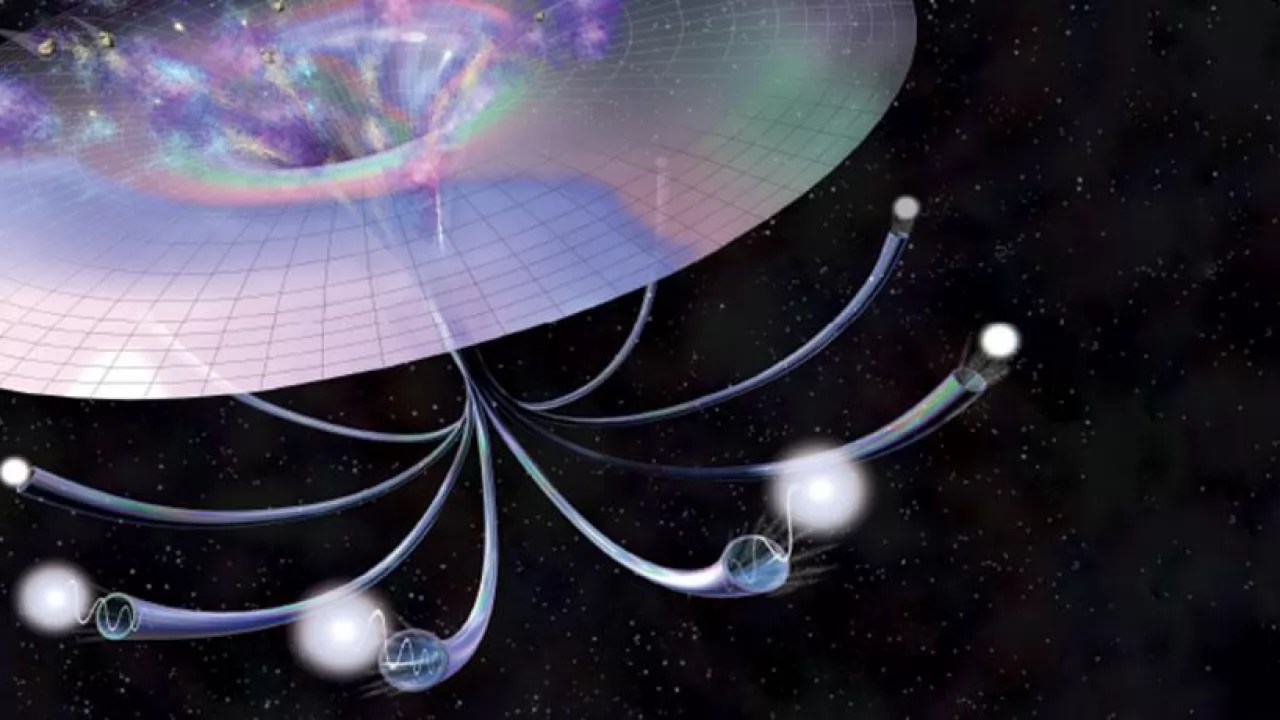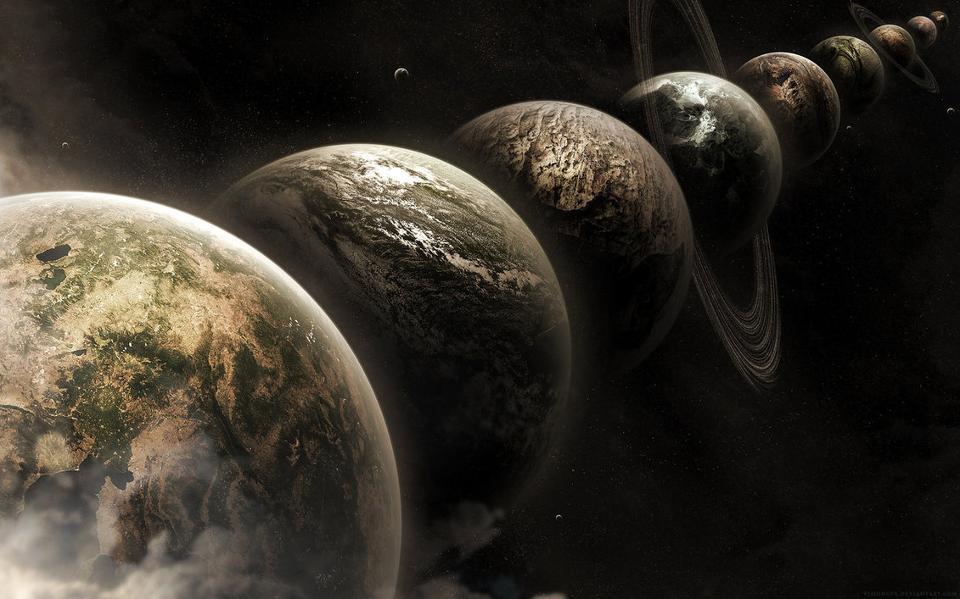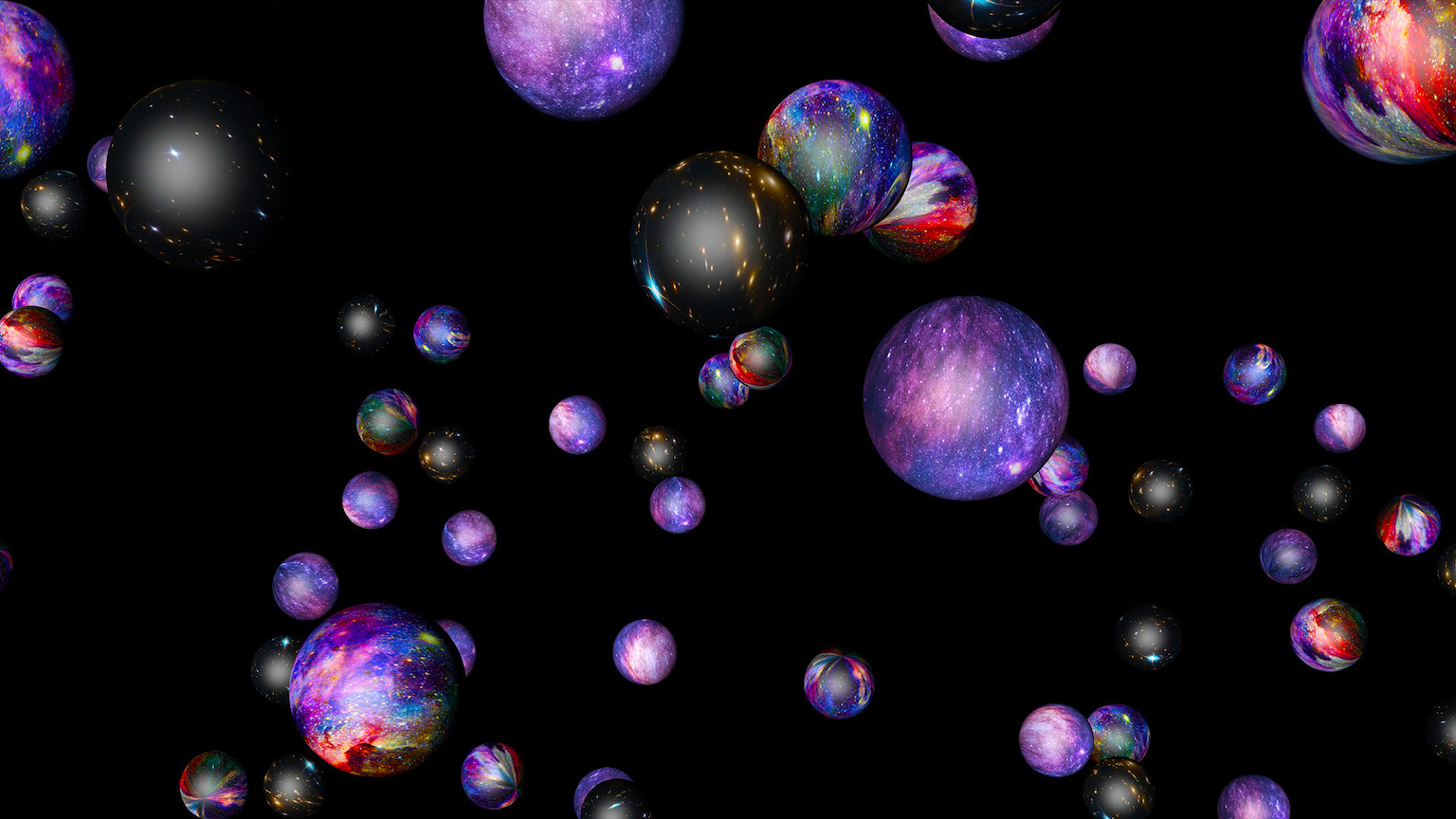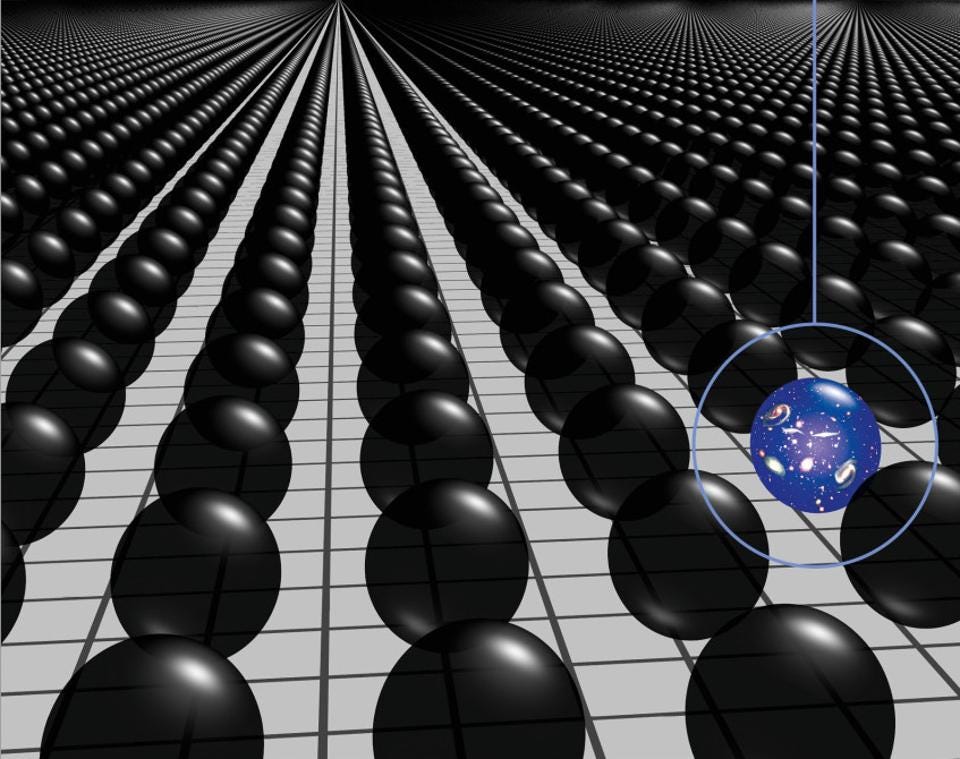Why scientists think the Multiverse isn’t just fiction

- One of the most successful theories of 20th century science is cosmic inflation, which preceded and set up the hot Big Bang, pushing back the origin of our Universe earlier than ever.
- We also know how quantum fields generally work, and if we assume inflation is an inherently quantum field, then there will always be more "still-inflating" space out there beyond the edge of our Universe.
- Whenever and wherever inflation ends, you get a hot Big Bang: an infinite number of them as time goes on. If inflation and quantum field theory are both correct, a Multiverse is absolutely necessary.
Everywhere we look in the Universe, we see many examples of objects that are similar, but each one is unique. Of all the galaxies, stars, and planets we know of, no two are identical, but rather each one has its own unique history, properties, and composition. Yet it’s a compelling idea that, given enough Universe to work with, eventually the particles within it would have organized themselves in such a way that the same possibility — no matter how unlikely — occurs multiple different times. Perhaps, given the idea of an infinite Universe, there may even be an infinite number of copies of every single system we can imagine, including planet Earth, complete with each and every one of us living on it.
It’s this idea, that there might be an infinite number of copies of each one of us out there, somewhere, that gave rise to our modern notion of the Multiverse. Perhaps there are different versions of us out there, where one tiny decision, outcome, or even a quantum measurement led to a vastly different result down the road. While many have derided the Multiverse as a fundamentally unscientific idea — as, after all, there’s no way to see, test, or access information about any portion of the cosmos beyond our limited observable Universe — the fact is that the Multiverse’s very existence is rooted in science itself. In fact, if just two things are true:
- that cosmic inflation, which preceded and set up the Big Bang, occurred as we think it did,
- and that inflation, like all other fields in the Universe, is inherently a quantum field in nature, obeying all the quantum rules that other quantum theories obey,
then a Multiverse comes along as an inevitable consequence of those ideas. Here’s why physicists, despite the objections of a few, overwhelmingly claim that a multiverse must exist.
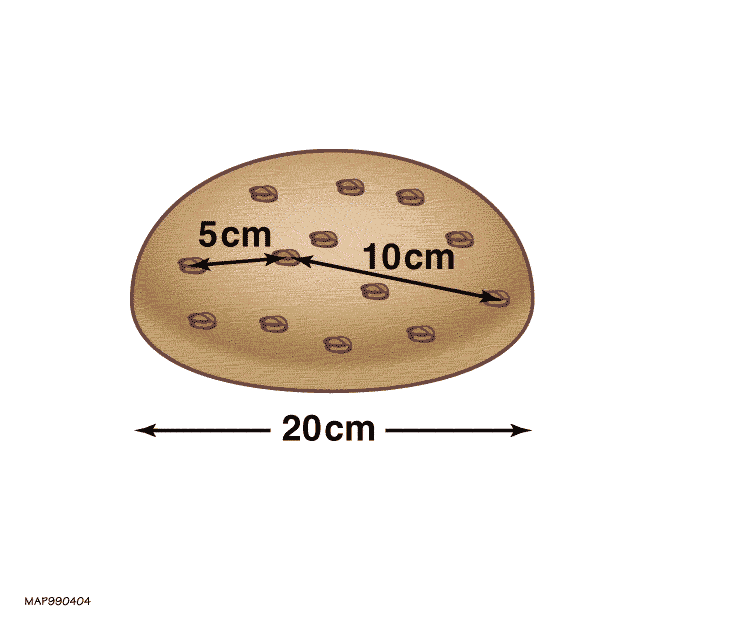
The story begins back with the discovery of the expanding Universe. Back in the 1920s, the evidence became overwhelming that not only were the copious spirals and ellipticals in the sky actually entire galaxies unto themselves, but that the farther away such a galaxy was determined to be, the greater the amount its light was shifted to systematically longer wavelengths. While a variety of interpretations were initially suggested, they all fell away with more abundant evidence until only one remained: the Universe itself was undergoing cosmological expansion, like a loaf of leavening raisin bread, where bound objects like galaxies (e.g., raisins) were embedded in an expanding Universe (e.g., the dough).
If the Universe was expanding today, and the radiation within it was being shifted toward longer wavelengths and lower energies, then that means that in the past, the Universe must have been smaller, denser, more uniform, and hotter. As long as any amount of matter and radiation are a part of this expanding Universe, the idea of the Big Bang yields three explicit and generic predictions:
- a large-scale cosmic web whose galaxies grow, evolve, and cluster more richly over time,
- a low-energy background of blackbody radiation, left over from when neutral atoms first formed in the hot, early Universe,
- and a specific set of ratios for the lightest elements — hydrogen, helium, lithium, and their various isotopes — that exist even in regions that have never yet formed stars at all.

All three of these predictions have been observationally borne out, and that’s why the Big Bang reigns supreme as our leading theory of the origin of our Universe, while all of its other competitors have fallen by the wayside. However, the Big Bang only describes what our Universe was like in its very early stages; it doesn’t explain why the Universe possessed the specific properties we’ve observed. In physics, if you know the initial conditions of your system and what the rules that it obeys are, you can predict extremely accurately — to the limits of your computational power and the uncertainty inherent in your system — how it will evolve arbitrarily far into the future.
Therefore, we can ask the important question: what initial conditions did the Big Bang need to have at its beginning in order to give us the Universe we observe now? The answers are a bit surprising, but what we find is that:
- there had to be a maximum temperature that’s significantly (about a factor of ~1000, at least) lower than the Planck scale, which is where the known laws of physics break down,
- the Universe had to have been born with density fluctuations of approximately the same magnitude on all scales (with slightly, by a few percent, smaller magnitude fluctuations on small cosmic scales than large ones),
- the expansion rate and the total matter-and-energy density must have balanced almost perfectly: to at least ~30 significant digits at the moment the hot Big Bang began,
- the same initial conditions — same temperature, density, and spectrum of fluctuations — must have existed at all locations, even between two locations where a signal at the speed of light could not have traversed the distance between them in the time elapsed since the Big Bang,
- and the total entropy of the Universe must have been much, much lower than it is today, by a factor of many trillions.

Whenever we come up against a question of initial conditions — basically, why did our system start off the way it must have begun — we only have two options available to us. We can appeal to the unknowable, saying that it is this way because it’s the only way it could’ve been (i.e., the Lady Gaga explanation, saying it was simply “born this way”), and we can’t know anything further. However, there’s a scientific approach we can try as well: we can attempt to find a mechanism for setting up and creating the conditions that we know we needed to have. That second pathway is what physicists call “appealing to dynamics,” where the mechanism we devise must do three important things.
- It has to reproduce every success that the model it’s trying to supersede — the hot Big Bang in this instance — produces. Those earlier cornerstones must all arise from any mechanism we propose.
- It has to explain the key observational fact that the Big Bang cannot: the initial conditions the Universe started off with. These problems, the ones that come unexplained within the Big Bang alone, must be explained by whatever novel idea comes along.
- And it has to make new predictions that differ from the original (Big Bang) theory’s predictions, where those predictions must lead to a consequence that is in some way observable, testable, and/or measurable.
The only idea we’ve had that met all three of these criteria was the theory of cosmic inflation, which has now achieved unprecedented successes on all three fronts.
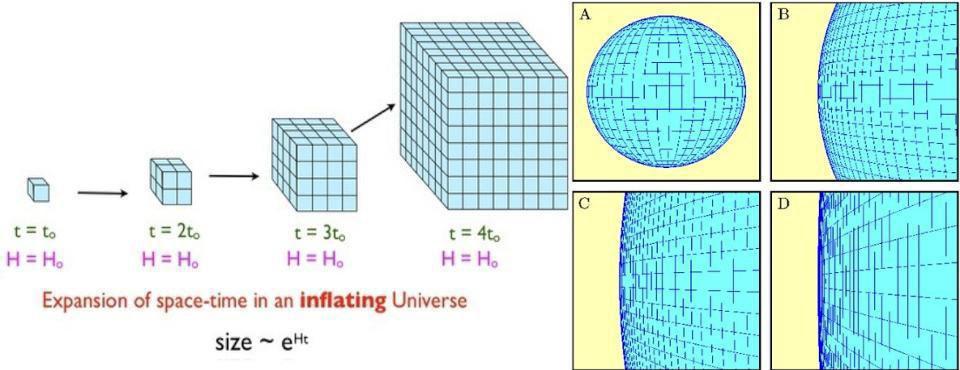
What inflation basically says is that the Universe, before it was hot, dense, and filled with matter-and-radiation everywhere, was in a state where it was dominated by a very large amount of energy that was inherent to space itself: some sort of field or vacuum energy. Only, unlike today’s dark energy, which has a very small energy density (the equivalent of about one proton per cubic meter of space), the energy density during inflation was tremendous: some ~1025 times greater than the dark energy density is today. Since it’s the energy density, according to Einstein’s general relativity, that determines the expansion rate, that means that during inflation, not only was the expansion rate incredibly large, but it was relentless: as space continues to expand, the expansion rate remains enormous.
This is profoundly different behavior than the Universe we’re familiar with today. In an expanding Universe with matter and radiation, the volume increases while the number of particles stays the same, and hence the density drops. Since the energy density is related to the expansion rate, the expansion rate of the Universe slows down over time.
But if the energy density is in a form that’s intrinsic to space itself, then the energy density remains constant with time, and so too will the expansion rate. The result is what we know as exponential expansion, where after a very small period of time, the Universe doubles in size, and after that time passes again, it doubles again, and so on. In very short order — a tiny fraction of a second — a region that was initially smaller than the smallest subatomic particle can get stretched to be larger than the entire visible Universe is today.

During inflation, the Universe — irrespective of what properties it had at the start of inflation — gets stretched to enormous scales. This accomplishes a tremendous number of things in the process, among them:
- stretching the observable Universe, irrespective of what its initial curvature was, to be indistinguishable from flat,
- taking whatever initial conditions existed in the region that began inflating, and stretching them so that they’re now uniform across the entire visible Universe,
- taking whatever quanta were present within that region, prior to inflation, and rapidly driving them away from one another to arbitrarily low densities,
- creating minuscule quantum fluctuations and stretching them across the Universe as well, so that they’re almost the same on all distance scales, but with slightly smaller-magnitudes on smaller scales (when inflation is about to end),
- converting all that “inflationary” field energy into matter-and-radiation, but only allowing that matter-and-radiation to reach a maximum temperature that’s still well below the Planck scale (but comparable to the inflationary energy scale),
- and creating a spectrum of density and temperature fluctuations that exist on scales larger than the cosmic horizon, and that are adiabatic (of constant entropy) and not isothermal (of constant temperature) everywhere.
This, at last, does all three of the things we require for a new theory to be considered for superseding an older one. Inflation reproduces the successes of the non-inflationary hot Big Bang, provides a mechanism for explaining the Big Bang’s initial conditions, and makes a slew of novel predictions that differ from those with a non-inflationary beginning. Beginning in the 1990s and through the present day, the inflationary scenario’s predictions agree with observations, distinct from the non-inflationary hot Big Bang.

Based on the properties that we observe our Universe to possess today, there’s a minimum amount of inflation that had to have occurred in the past in order to reproduce what we see. That further implies that there are certain conditions that inflation has to satisfy in order to be successful: the conditions that give rise to those predictions and post-dictions we just mentioned. Perhaps the simplest, most easy-to-understand way to model inflation is to treat it as a hill, where as long as you stay on top of the hill, you inflate, but as soon as you roll down into the valley below, inflation comes to an end and transfers its energy into matter and radiation.
If you do this, you’ll find that there are certain shapes your hill can have, or what physicists call “potentials,” that succeed on these fronts, while others simply don’t. The key to getting the amount of inflation that you need has everything to do with the top of the hill: it needs to be flat enough in shape over a large enough region. In simple terms, if you think of the inflationary field as a ball atop that hill, it needs to roll slowly for the majority of inflation’s duration, only picking up speed and rolling rapidly when it enters the valley, which is what brings inflation to an end. We, as scientists, have quantified how slowly inflation needs to roll, which allows us to learn something about the required shape of this potential. As long as the top is sufficiently flat, inflation can work as a viable solution to the beginning of our Universe.

So, where does the idea of a Multiverse come into play? It has to do with the one way we can’t treat the ball-and-hill analogy too seriously: the fact that this is a purely classical view of things. The Universe, at least as we understand it, isn’t purely classical, but rather is quantum in nature. And that implies that inflation, like all of the fields we know of, ought to be a quantum field, too, as far as its very nature is concerned. The quantum nature of a field teaches us that many of its properties cannot be exactly determined, but rather will possess a probability distribution to them. And, just as with all time-dependent quantum systems, the greater the amount of time that passes, the greater the amount that the probability distribution will spread out.
In other words, inflation isn’t about rolling a point-like ball down a hill. Instead, what’s actually rolling down the hill is a quantum probability wavefunction, which is able to take on a variety of allowed values.
But as the ball rolls along the hill, the Universe is undergoing cosmic inflation, which means it’s expanding exponentially in all three dimensions. If we were to take a 1-by-1-by-1 cube and call that “our Universe,” then we could watch that cube expand during inflation. If it takes some tiny amount of time for the size of that cube to double, then it becomes a 2-by-2-by-2 cube, which requires 8 of the original cubes to fill. Allow that same amount of time to elapse, and it becomes a 4-by-4-by-4 cube, needing 64 original cubes to fill. Let that time elapse again, and it’s an 8-by-8-by-8 cube, with a volume of 512. After only about ~100 “doubling times,” we’ll have a Universe with approximately ~1090 original cubes in it, or a Universe that’s expanded in volume by that same factor: ~1090.

Here’s where the problem arises. If inflation is a quantum field, and quantum fields spread out over time, then what happens when the “quantum ball” atop the hill is rolling slowly, along the flat part of the hill?
The answer is that the part of the wavefunction that spreads closer to the valley-end of the hill is more likely to roll into the valley itself. In those regions, inflation is very likely to swiftly come to an end, where that field energy will then get converted to matter-and-radiation, and something that we know as a hot Big Bang will ensue. This region might be irregularly shaped at the boundaries, but some region that was just like it seems to describe the portion of the observable Universe that we can see and access. So long as enough inflation occurred to reproduce the observational successes we see in our Universe, this appears to be a good description of our own cosmic history.
But what about the portions of the wavefunction that spread out closer to the top, flatter part of the hill? Inflation continues for longer there, and these are the regions that we can consider to be “outside” of the regions where inflation swiftly comes to an end. What does that imply, as far as regions where:
- inflation comes to an end and a hot Big Bang ensues,
- versus those where inflation continues on, unabated, even while it ends elsewhere?
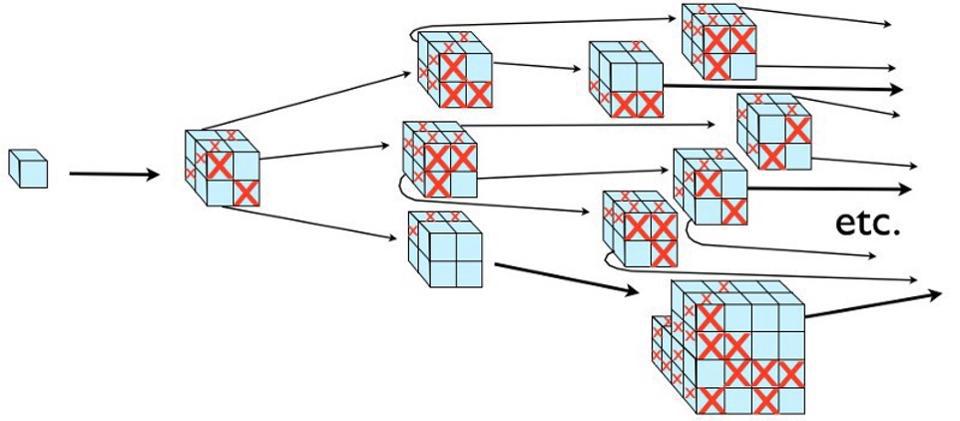
When you work out the mathematics for getting enough inflation before a hot Big Bang ensues, this is where science tells us that the Multiverse is all but inevitable. We have to mandate that the Universe experiences enough inflation so that our Universe can exist with the properties we observe it to have. We also know that, outside of the region where inflation ended, inflation must have continued onward for longer.
Now we ask the big question, “What is the relative size of those regions?” If we compare the regions where:
- inflation ends at a certain time,
- with the regions where inflation hasn’t ended after that time has elapsed,
we find that the latter regions, where inflation continues, are exponentially larger (and still growing with time) compared to the regions where it ends and a hot Big Bang ensues. Moreover, that size disparity continues to get worse as time goes on. Even if there are an infinite number of regions where inflation ends, there will be a larger infinity of regions where it persists. Moreover, the various regions where it ends — where hot Big Bangs occur — will all be causally disconnected, separated further by more regions of inflating space.
Put simply, if each hot Big Bang occurs in a “bubble” Universe, then the bubbles simply can never collide. What we wind up with is a larger and larger number of disconnected bubbles as time goes on, all separated by an eternally inflating space.

That’s what the Multiverse is, and why scientists accept its existence as the default position. We have overwhelming evidence for the hot Big Bang, and also that the Big Bang began with a set of conditions that don’t come with a de facto explanation. If we add in an explanation for it — cosmic inflation — then that inflating spacetime that set up and gave rise to the Big Bang makes its own set of novel predictions. Many of those predictions are borne out by observation, but other non-observable predictions also still arise as consequences of inflation.
One of them is the existence of myriads of universes, of disconnected regions each with their own hot Big Bang, that comprise what we know as a Multiverse when you take them all together. This doesn’t necessarily imply that different Universes have different rules or laws or fundamental constants, or that all the possible quantum outcomes you can imagine occur in some other pocket of the Multiverse. It doesn’t even necessarily mean that the Multiverse is physically real, as this is a prediction we cannot verify, validate, or falsify. But if:
- the theory of inflation is a good one, and the data says it is,
- and our Universe is quantum in nature, and all evidence suggests that it is,
then a multiverse is all but inevitable. You may not like it, and you really may not like how some physicists abuse the idea, but until a better, viable alternative to inflation comes around — and until that alternative can clear those same three theoretical hurdles that inflation has already cleared — the Multiverse is very much here to stay.
